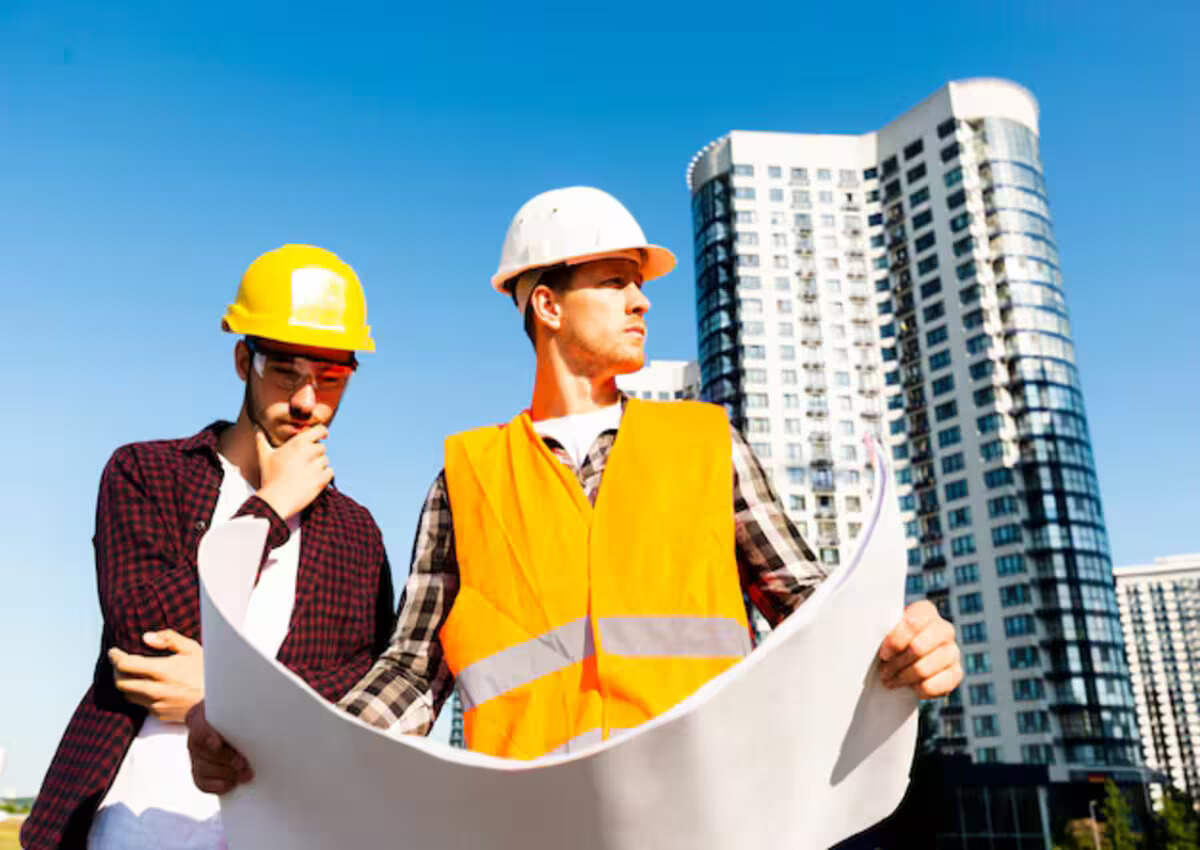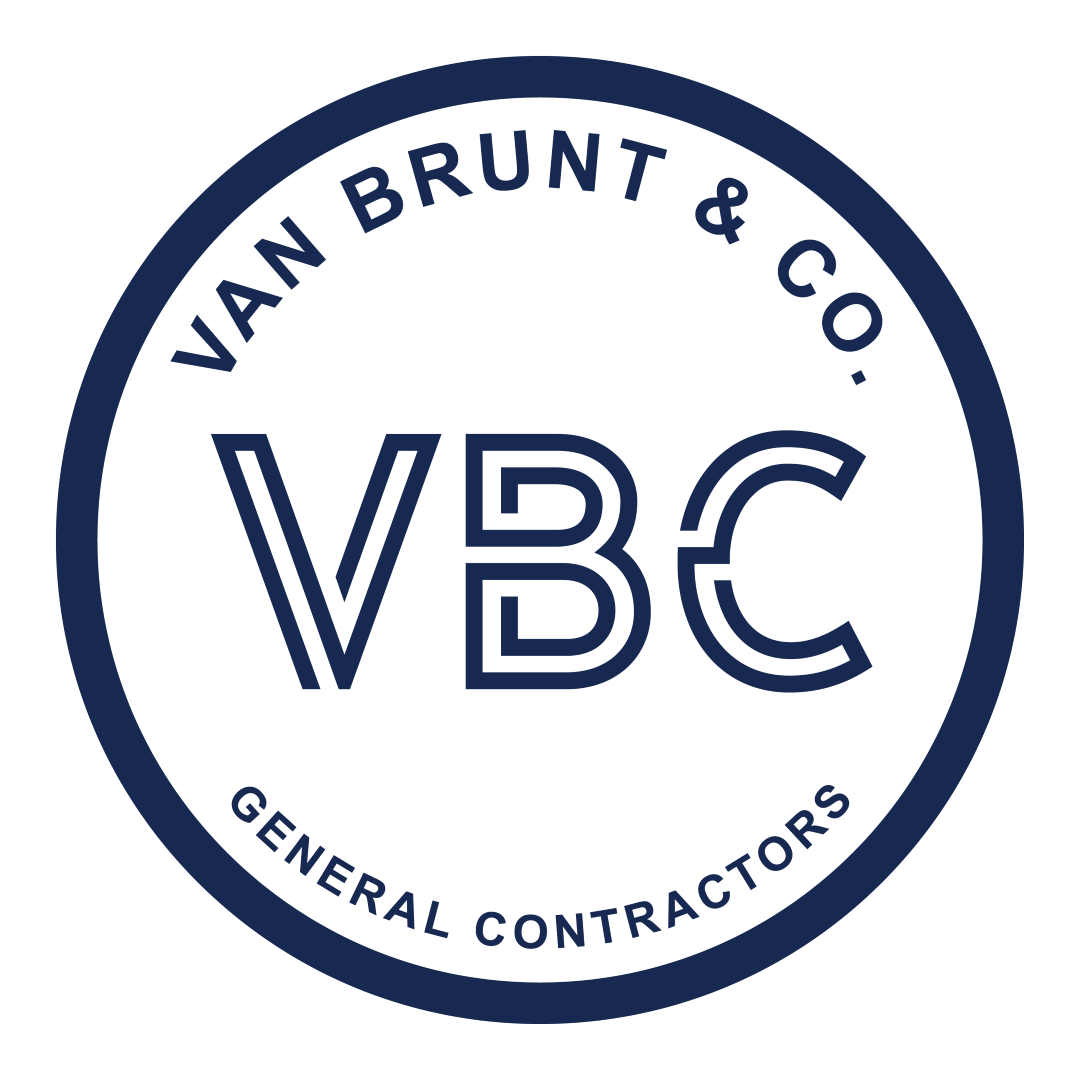Constructing a commercial building involves a structured series of steps, each critical to the success of the project. While each project varies in complexity, the core phases of commercial building construction are consistent across projects. The process can be broken down into six fundamental stages, each encompassing essential tasks: planning and development, design, pre-construction, procurement, construction, and post-construction. This breakdown helps ensure every element is accounted for, from initial vision to completion.
In this article, we’ll explore each phase of the commercial building construction process in depth, shedding light on the key tasks involved. Read on to gain a clear understanding of the critical stages in constructing a commercial building, making the process feel achievable and transparent.

Planning and Development Phase
The planning and development phase is the foundational stage of commercial building construction, setting the trajectory for the entire project. This initial phase is crucial, as every subsequent step is built upon the decisions made here. Being goal-oriented and critical-minded is essential, enabling project managers to ask vital questions, anticipate potential issues, and establish clear objectives.
Key tasks in the planning and development phase include:
- Selecting the Optimal Location: Choosing the right location is essential for the building’s success and accessibility.
- Setting a Budget: Developing a realistic budget ensures financial feasibility and guides decisions throughout the project.
- Pre-Designing: Outlining initial design concepts to align with project goals and vision.
- Hiring an Architect and Contractor: Bringing in skilled professionals early on fosters a cohesive team and a clear direction.
- Conducting Team Consultations: Regular consultations promote alignment and address concerns among all stakeholders.
Each of these steps ensures the project begins on a solid foundation, maximizing the potential for a smooth and successful build. This planning phase ultimately shapes the direction and success of the entire construction process.
Finding the Ideal Location
Choosing the location for a new commercial building is often one of the earliest and most pivotal decisions a developer or owner will make. In many cases, developers may even identify a prime location first, recognizing its business potential, and then craft the building concept around that site. Essentially, for some projects, location drives the vision.
Selecting an ideal location involves evaluating several key factors, including:
Accessibility
For a commercial project to thrive, the location must be easily accessible to both clients and employees. Ideally, it should be close to other buildings and establishments, rather than isolated or too far removed. Proximity to other commercial sites allows visitors to accomplish multiple tasks in a single area—whether dining, shopping, or running errands—without needing to travel between distant locations.
Customers often prefer destinations where they can take care of multiple needs at once, making it more attractive for them to visit your establishment if it’s surrounded by complementary businesses. This convenience factor can significantly enhance foot traffic and encourage repeat visits.
Commercial Zoning
Zoning laws are essential regulations that govern land use and dictate the types of structures permissible in specific areas. For a commercial building project, it’s crucial to ensure the property lies within a designated commercial zone, where it’s legally approved for business uses such as offices, retail shops, banks, and restaurants. This zoning alignment ensures compliance and facilitates smooth project progression.
If a property isn’t already zoned for commercial use, rezoning may be possible by submitting a rezoning application to the local government. However, this process can take time and requires thorough justification, so it’s often easier to begin with a location already zoned for commercial purposes.
No Building Moratorium
Before selecting a location for a commercial project, it’s essential to confirm that no building moratorium is in effect. Cities may impose a building moratorium if they determine it serves the community’s best interest, often halting construction unexpectedly. Sometimes, concerned citizen groups may even petition a judge to stop a project. To avoid such setbacks, thoroughly check for any moratoriums on the property.
Additionally, hiring a surveyor is recommended to conduct a boundary survey and provide an elevation certificate for the property. This survey should document all property boundaries and include any easements, ensuring a clear and legally sound foundation for the project.
Setting a Budget
Establishing a budget is a critical step in commercial construction, as this process involves numerous expenses—from purchasing land and conducting essential inspections to hiring architects and contractors, obtaining permits, acquiring materials, and managing post-construction costs. Each phase represents a financial commitment, so a well-defined budget is necessary to guide spending and keep the project on track.
It’s also essential to determine the funding source for the project and assess if investor support will be needed. A clear budget and funding plan provide a stable financial framework, helping ensure that every stage of the project is feasible and aligns with available resources.

Pre-Design
The pre-design phase bridges the gap between selecting a location and launching into the full design and development stages. This critical step involves setting clear project goals, defining the developer’s objectives, and establishing a reasonably accurate estimate of the total project cost. During pre-design, the developer also brings on board essential team members, such as the architect and contractor, or may opt to work with a design-build firm that specializes in integrated construction services.
In this phase, the project team, including the owner, contractor, and consultants, meets to align on objectives, share ideas, and develop a general construction plan. Key discussions focus on how to meet project requirements, including budget, timeline, contracts, and payment processes. The construction plan will break down anticipated costs for each stage and cover essential elements like estimated expenses, design specifications, and compliance requirements to prevent costly errors.
Specific tasks during pre-design include:
- Selecting building materials, design products, and necessary equipment, and estimating their costs
- Determining building size, room dimensions, and orientation for optimal utility connections
- Reviewing development covenants to ensure project feasibility
- Assessing whether desired amenities align with site factors like orientation and access
- Preparing contract documents that set the project timeline
- Establishing costs for all construction phases
- Compiling a construction document package with code-compliant designs
With the completion of these tasks, the project is ready to move into the construction bidding stage, setting the groundwork for a smooth transition into the building process.

Design Phase
The design phase is where architects, contractors, and a team of specialized professionals come together to develop a comprehensive set of drawings and project specifications. Architects and designers will create a detailed building model to accurately estimate costs and ensure the design adheres to all building codes and regulations.
Engineering Expertise in the Construction Phase
- Structural Engineers focus on the building’s structural integrity.
- Electrical Engineers design the electrical layout.
- Mechanical Engineers handle plumbing and HVAC systems.
- Civil Engineers are responsible for external elements like parking lots, drainage systems, and infrastructure connections.
For projects with three or more stories, a threshold inspector will also be required to conduct structural inspections throughout construction.
Contractors will rely on these drawings, plans, and specifications as blueprints for building, maintaining ongoing communication with architects to ensure seamless execution. This collaborative approach ensures every design element is accurately realized and aligned with project goals.
Key Elements of the Design Phase
- Creating detailed architectural drawings, design layouts, and specifications for each component
- Finalizing the structural, electrical, mechanical, and civil engineering designs
- Confirming compliance with all relevant building codes and safety standards
- Preparing construction documents for bidding, permits, and regulatory approvals
- Producing cost estimates for every design component
With this solid groundwork, the design phase sets the stage for a clear, coordinated transition into the actual construction.
Construction Bidding
The construction bidding phase is essential in determining the total cost of a commercial building project. During this stage, construction companies submit bids to compete for the role of the main contractor, and quotes from potential vendors and suppliers are collected to estimate material and service costs accurately.
To perform a thorough budget analysis, the project team typically requests price quotes from at least three vendors for each required service or material. This process enables the owner to evaluate which vendor or contractor offers the most competitive pricing and can reliably deliver materials and services within the project’s timeframe. Selecting the right bidders helps ensure that the project remains within budget and on schedule.
Through construction bidding, the project team establishes a cost-effective, reliable network of contractors and suppliers, setting the groundwork for efficient project execution.
Feasibility
In commercial construction, feasibility ensures that all site requirements and desired amenities are compatible with the project’s objectives. This involves a careful assessment of critical factors like site access, utility connections, building size, location, and orientation. Overlooking these aspects can lead to significant challenges or even project failure.
By evaluating these feasibility concerns early, the project team can address potential limitations or modifications needed to align the building’s design and functionality with the site’s characteristics. This proactive approach reduces risks and sets the stage for a successful construction process, tailored to the specific needs of the site and the project’s goals.
Programming
In the programming phase, the architect defines the building’s spatial and functional needs. This process involves creating a building program, which outlines the required spaces, flexibility, and functionality to meet the project’s objectives. The program provides clarity on essential details, such as the building’s total size, room count, and how each area will be used and by whom, ensuring that every aspect of the building aligns with its intended purpose.
Schematic Design
The schematic design phase is an initial creative process where the visual representation of the building takes shape. Here, the architect develops early sketches that reflect the materials, sizes, shapes, forms, colors, textures, and patterns that will be used in construction. These designs establish how the business or company will be represented aesthetically and functionally within the space. Schematic designs provide a foundational visual and functional concept, guiding the building’s overall look and usability.
Design Development
The design development phase delves into the detailed research and selection of equipment and materials necessary for the building’s construction. During this stage, architects and engineers investigate the types, quality, and functionality of materials and equipment to ensure they align with the project’s design and budget. This phase also includes cost analysis for each material and piece of equipment, allowing for more accurate budgeting and resource allocation.
Through this detailed planning, the project team ensures that every component is selected with both quality and cost-effectiveness in mind, laying the groundwork for a well-resourced and efficiently executed construction process.
Contract Documents and Working Drawings
Contract documents and working drawings are the finalized, detailed plans and specifications for a commercial construction project. These documents include complete schematic drawings and technical details that provide a clear, structured guide for every stage of the build. For the owner, they are essential for evaluating construction bids, while for builders, they serve as the primary reference throughout the construction process.
The contract documents also establish key elements such as project costs and timelines, offering a structured timeline for each construction phase. These documents become essential guides, not only for contractors but also for vendors, ensuring alignment on materials, methods, and timelines to keep the project on track.

Pre-Construction Phase
The pre-construction phase is essential for preparing all foundational elements before actual building begins. During this stage, contractors must complete several key tasks to ensure regulatory compliance and risk management.
Obtaining a Building Permit
To secure a building permit, the design plans are submitted to the local building department, where they are reviewed for compliance with regulations. The department may provide feedback that the project team must address to obtain final approval. This process ensures that all plans meet safety and code standards before construction starts.
Obtaining Insurance
Insurance coverage is vital to protect all parties involved in the construction process. Policies typically include builders’ risk insurance, workers’ compensation, and general liability insurance for contractors. These protections guard against potential accidents or issues that may arise, safeguarding the project and its stakeholders.
Completing these pre-construction tasks provides a secure foundation, addressing legal and safety requirements to facilitate a smooth construction process.
Forming a Construction Team
Building a reliable and efficient construction team is crucial for the successful execution of any commercial project. A well-rounded team should include a project manager, contract administrator, superintendent, and field engineer, each playing a vital role in the project’s workflow.
- Project Manager: Serving as the team’s lead, the project manager oversees all construction operations, making key decisions and acting as the main point of contact for the entire team. They ensure the project progresses according to plan, budget, and schedule.
- Contract Administrator: This role involves managing all contractual aspects of the project, ensuring that agreements with contractors, suppliers, and other parties are properly handled and adhered to.
- Superintendent: Responsible for coordinating day-to-day construction activities, the superintendent ensures that work progresses according to the project timeline and that all tasks are synchronized for optimal efficiency.
- Field Engineer: Focused on the construction site’s conditions, the field engineer monitors site safety and compliance, manages on-site paperwork, and ensures the project adheres to specifications.
This structured team setup ensures that each area of the construction process is covered, promoting efficient and organized progress from start to finish.

Procurement Phase
In the procurement phase, the general contractor is responsible for acquiring all materials, equipment, services, and workforce needed to initiate construction. This involves creating detailed purchase orders that confirm each material meets the project’s specifications at an agreed price. The timing and priority of each order depend on the building’s design and the specific requirements of each construction phase.
For larger projects, the workload may be shared with subcontractors, each specializing in different areas. For instance, one subcontractor may handle glass installation, another may manage woodwork, and another may oversee concrete work. These subcontractors are typically chosen during the bidding phase, ensuring they meet the project’s standards and timeline.
Through careful procurement and coordination, this phase secures the resources necessary to transition seamlessly into the construction process.

Construction Phase
The construction phase marks the transformation of a vacant site into a functional building or architectural structure. This phase begins with a kickoff meeting led by the superintendent, where the construction team reviews drawings and pricing documents. Important details like work hours, material storage, and quality control protocols are finalized to ensure all team members are aligned on project expectations.
Construction typically starts with a groundbreaking ceremony, a symbolic event marking the beginning of the main build. The sequence of construction steps varies based on the building’s design and functionality, but each stage is meticulously inspected by both the state construction inspector and the project manager. These inspections ensure adherence to safety standards and project specifications, supporting a smooth and compliant build process from start to finish.
Site Preparation
Site preparation is a crucial phase that involves multiple tasks to ready the location for construction. This groundwork ensures a stable, compliant foundation for the building project. Key tasks in this phase include:
- Drainage Implementation: Setting up drainage systems that meet building code standards to manage water flow effectively.
- Site Clearance and Excavation: Clearing and excavating the site to prepare it for laying the building’s foundation.
- Utility Layout: Arranging essential utility lines, including water, power, and sanitation, to support the building’s functionality.
- Vegetation Removal: Removing any existing vegetation on the property to clear space for construction.
- Temporary Storage Hub Construction: Setting up a temporary storage area for materials and equipment needed during the build.
- Inspections: Conducting thorough inspections of structural elements, utility lines, building code requirements, as well as electrical, HVAC, and other essential systems to ensure all preparations meet regulatory standards.
This comprehensive site preparation establishes a safe and organized environment, setting a solid base for the construction to proceed efficiently.
Foundation
The foundation is a critical component of any building, designed to evenly distribute the structure’s weight over a broad base area and transfer this load safely to the soil below. The foundation must be engineered so that the load does not exceed the soil’s bearing capacity. The foundation’s specifications, such as its type, dimensions, and depth, are based on the architect’s detailed drawings.
For most commercial buildings, a concrete foundation is standard. Contractors build a form using materials like wood, foam, or panels to shape the foundation, which is then reinforced with mesh or rebar for added strength. Before pouring the concrete, essential utilities and miscellaneous components, such as heating elements and electrical wiring, may be incorporated into the foundation forms.
Once the concrete or cement is poured, it’s left to cure, solidifying into a stable base. After curing, the forms are removed, revealing a completed foundation that serves as the building’s structural backbone, ready to support the construction above.
Framing
Framing is the process of constructing a building’s structural skeleton, providing essential support and stability. This structural framework ensures the building can bear the loads applied to the roof, walls, and other elements, preventing collapse and reinforcing safety against environmental stresses and natural disasters.
The type of frame depends on the building’s materials:
- Wood Construction: The frame is built with wood, ideal for smaller buildings or those using traditional wood construction.
- Metal Construction: For larger, commercial structures, a steel frame is constructed to provide robust support.
- Masonry Construction: Masonry buildings are framed by laying bricks one by one, creating a strong, durable structure.
Once the frame is in place, it provides a clear shape to the structure, allowing for easier installation of features such as windows and exterior metal doors. This framing phase lays the groundwork for the building’s walls, roof, and other essential components.
Roofing, Siding, and HVAC
Roofing and siding are essential not only for giving a commercial building its exterior appearance but also for providing protection against environmental elements like rain, sun, snow, and wind. Together, they form a building envelope that shields the structure from moisture-related issues, helps retain heat, and contributes to the comfort of those inside.
During this phase, the contractor installs the roof and siding, completing the building’s outer shell. At this stage, HVAC professionals can also install the heating, ventilation, and air conditioning (HVAC) system, ensuring regulated airflow and temperature control throughout the building. This integration of roofing, siding, and HVAC is crucial for both energy efficiency and indoor comfort, creating a safe, climate-controlled environment for future occupants.
Exterior
The exterior envelope of a commercial building serves multiple functions, acting as a barrier between indoor and outdoor environments. This exterior wall system provides environmental control, mediating temperature, light, and airflow, while also offering security, privacy, fire control, and aesthetics. Openings in the exterior walls, such as doors and windows, allow for access, natural lighting, ventilation, and views, enhancing both functionality and comfort for occupants.
For masonry or load-bearing structures, the exterior walls play a structural role, transferring wind loads from the floors and roof to the foundation. In framed structures, the exterior walls are often non-loadbearing yet are self-supporting and designed to withstand wind forces, accommodate thermal expansion, and prevent fire spread.
The exterior installation process includes adding a weather-resistant barrier and either painting or applying pre-finished siding to protect and complete the building’s outer appearance. Once the exterior is finalized, including all protective and aesthetic finishes, the project is near completion, with only final interior and finishing touches remaining.
Utilities
Utilities—including power, water, sewage, and communication systems—are integral to a building’s functionality and are typically installed in stages throughout construction.
For water systems, piping is initially installed and embedded within the foundation, then extended through the building’s framing. Final connections, such as sinks, faucets, toilets, and appliances, are added during the interior finishing stage.
Electrical systems follow a similar phased approach. Wiring is run through walls and framing at various construction stages, ensuring a complete and safe power network throughout the building.
This staged utility installation approach allows for seamless integration with the building’s structure, ensuring that essential services are in place and fully functional when the project reaches completion.
Landscaping
Landscaping is typically managed by a specialized subcontractor and can range from simple tasks, such as site cleanup and adding gravel, to more elaborate designs featuring trees, shrubs, flowerbeds, and decorative elements like garden fountains. This finishing touch enhances the building’s aesthetic appeal and introduces greenspace, creating a more inviting and pleasant environment for occupants and visitors.
Thoughtfully designed landscaping contributes to a building’s overall atmosphere, making it not only visually appealing but also environmentally enriching.
Post-Construction Phase Explained
As construction nears completion, the contractor conducts a thorough final walk-through, known as the “punch-out,” to create a punch list. This essential step identifies any unsatisfactory work or minor issues, allowing the team to address them with final repairs before officially concluding the project and handing over the building.
Identifying and fixing these last-minute issues—like cracked tiles, uneven paint, or misaligned fixtures—is easier to do before the building is occupied and fully furnished. Once the occupancy phase begins, spotting and addressing such problems can become more challenging.
Following the construction wrap-up, the architect issues a Substantial Completion Certificate. This document signals to the building official that it’s time for the final inspection. Throughout the entire project, multiple inspections occur at key stages, often led by authorities who issue required permits. These inspections ensure that foundational aspects, structure, plumbing, electrical systems, building codes, utilities, and HVAC installations are all up to standard and ready for use.
Careful attention to these post-construction steps ensures a smooth transition from construction to occupancy, minimizing future inconveniences for the building’s users.
Understanding the Warranty Period
Many contractors offer a warranty period on their construction work, providing clients with a safety net for any issues that may arise after project completion. During this time, if you identify any areas in the home that don’t meet your expectations or show signs of poor construction practices, the contractor will address these issues at no additional cost.
However, it’s essential to know that this warranty typically excludes any faulty materials or appliances that are not part of the contractor’s work. These items generally come with their own warranties from the manufacturers or distributors, and those warranties may not include coverage for labor.
Being aware of the warranty period and its coverage helps homeowners confidently address any concerns, ensuring lasting satisfaction with their new space.
Conclusion
Constructing or remodeling a commercial building is a multi-phase journey that requires careful planning, collaboration, and attention to detail from start to finish. Each phase, from the initial planning and development through to the final inspections and warranty period, plays a vital role in ensuring the building is safe, functional, and meets the specific needs of its intended purpose. By understanding each stage in this process, including aspects of remodeling, stakeholders can make informed decisions, minimize potential issues, and achieve a successful, cost-effective project outcome. Whether you’re a developer, contractor, or future building occupant, this comprehensive approach to construction and remodeling enhances project transparency, builds confidence, and ensures lasting quality.
FAQs
What are the main phases in commercial building construction?
The main phases are planning and development, design, pre-construction, procurement, construction, and post-construction.
Why is the planning phase so important?
The planning phase sets the project’s trajectory by establishing goals, budget, and site selection, which are essential for a successful build.
What happens during the punch-out stage?
In the punch-out stage, contractors address any remaining issues like paint flaws or tile cracks before handing over the building.
How does the warranty period work?
During the warranty period, contractors fix construction-related issues free of charge, though it doesn’t cover materials from other manufacturers.
What is the role of inspections in construction?
Inspections ensure every aspect, like plumbing, electrical, and structural integrity, meets code and safety standards at various project stages.

